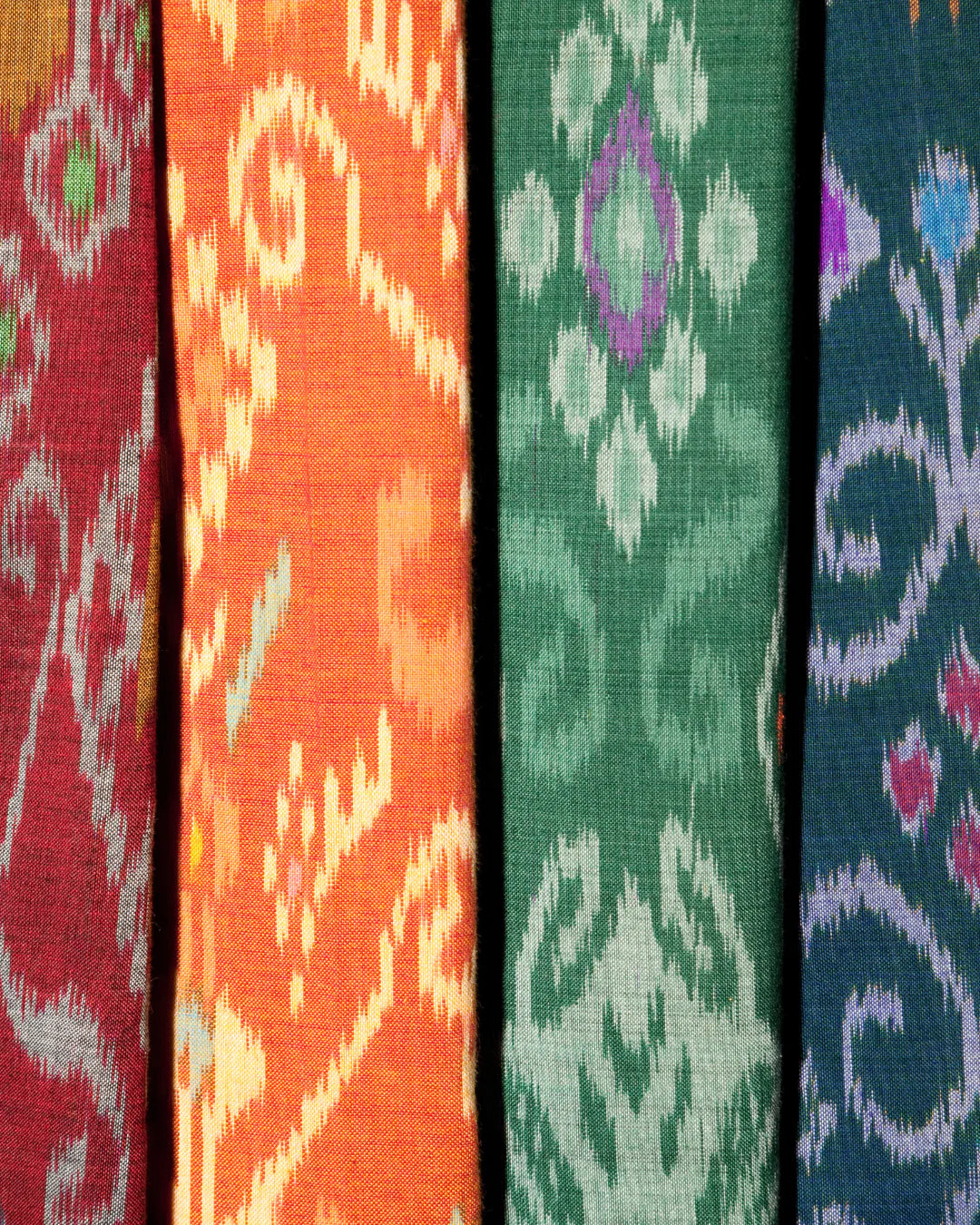
POCHAMPALLY IKKAT
History:
Pochampally Ikat, originating from Bhoodan Pochampally in Telangana State, emerged in the 1800s and gained popularity along the silk route due to its association with power and affluence. This weaving tradition expanded across Pochampally's mandals, transforming the town into a formidable competitor among silk manufacturers in India. The unique and classic nature of the fabric, coupled with the skilled artisans residing in Pochampally's cluster of 80 villages in Andhra Pradesh, contributed to its widespread recognition. With over 10,000 families participating in the weaving process, this area earned the title of Silk City, passing down trade secrets through generations. Some intricate Pochampally sarees can take up to 100 days to craft to perfection.
Boosted in the 1950s by the village head's initiative to incorporate cotton and silk weaves for increased labor profits, Bhoodan Pochampally earned the moniker 'Silk City of India,' leaving an indelible mark on the silk textile industry.
Process:
Pochampally weaves, known as 'Ikat,' 'Ikkat,' or 'tie and dye,' involve a resist dyeing method where yarns are bound and wrapped in geometric patterns before dyeing. Artisans may adjust the bindings to create new patterns and colors through multiple dyeing iterations. Once dyed, the bindings are removed, and the yarns are woven into the cloth.
Types:
Warp Ikat or Single Ikat involves resist-dyeing only the warp yarns, creating a visible pattern before weaving. Weft Ikat or Double Ikat is a meticulous technique where both warp and weft undergo resist dyeing before being woven into a single cloth. Pochampally Ikat employs the double Ikat method, transferring intricate patterns onto the fabric.
Key Differentiation:
Unlike batik or other resist-dyeing methods where the resist is applied directly onto woven fabric, Ikat's resist dyeing occurs on yarns before weaving. The apparent blurriness in Ikat designs signifies the challenges faced by weavers in aligning dyed yarns for intricate patterns. Original Pochampally Ikats involve dyeing yarns, which are then woven on a loom, differentiating them from printed fabrics.
Trivia:
Pochampally Ikat is woven in Bhoodan Pochampally and Puttapaka in Telangana. While Pochampally and Patola fabrics share a tie-and-dye technique, they also share a migration tale. The Salvis migrated to Patan (Gujarat) from South India, weaving silk Patola Sarees. Meanwhile, brothers Venkiah and Malliah migrated from Chirala (Andhra Pradesh) to Pochampally (Telangana).
References:




